
Packaging and materials company International Paper (NYSE:IP) fell short of the market’s revenue expectations in Q1 CY2025, but sales rose 27.8% year on year to $5.90 billion. Its non-GAAP profit of $0.23 per share was 38% below analysts’ consensus estimates.
Is now the time to buy International Paper? Find out by accessing our full research report, it’s free.
International Paper (IP) Q1 CY2025 Highlights:
- Revenue: $5.90 billion vs analyst estimates of $5.99 billion (27.8% year-on-year growth, 1.5% miss)
- Adjusted EPS: $0.23 vs analyst expectations of $0.37 (38% miss)
- Free Cash Flow was -$618 million, down from $144 million in the same quarter last year
- Market Capitalization: $25.14 billion
"Reflecting on my first year, I am proud of the International Paper team for embracing transformational change and achieving tremendous progress together," said Andy Silvernail, Chief Executive Officer.
Company Overview
Established in 1898, International Paper (NYSE:IP) produces containerboard, pulp, paper, and materials used in packaging and printing applications.
Sales Growth
A company’s long-term sales performance is one signal of its overall quality. Any business can experience short-term success, but top-performing ones enjoy sustained growth for years. International Paper’s demand was weak over the last five years as its sales fell at a 2.1% annual rate. This was below our standards and is a sign of poor business quality.
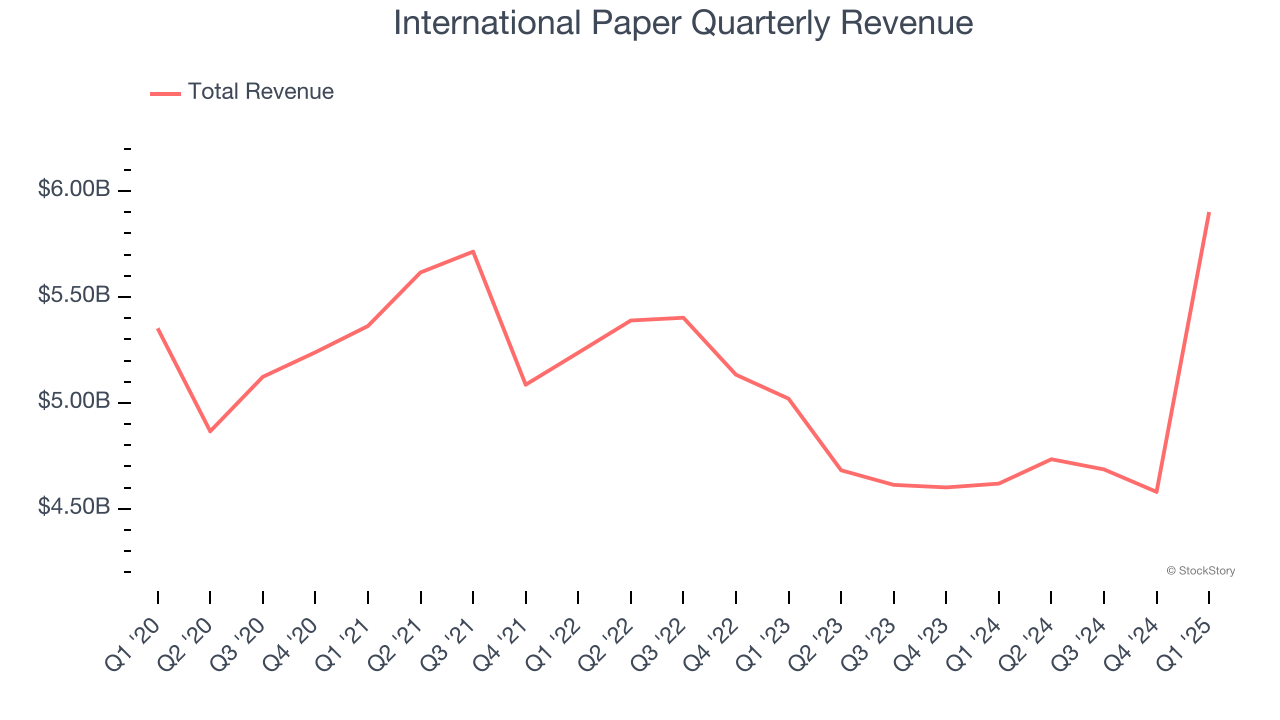
We at StockStory place the most emphasis on long-term growth, but within industrials, a half-decade historical view may miss cycles, industry trends, or a company capitalizing on catalysts such as a new contract win or a successful product line. International Paper’s annualized revenue declines of 2.5% over the last two years align with its five-year trend, suggesting its demand has consistently shrunk. International Paper isn’t alone in its struggles as the Industrial Packaging industry experienced a cyclical downturn, with many similar businesses observing lower sales at this time. 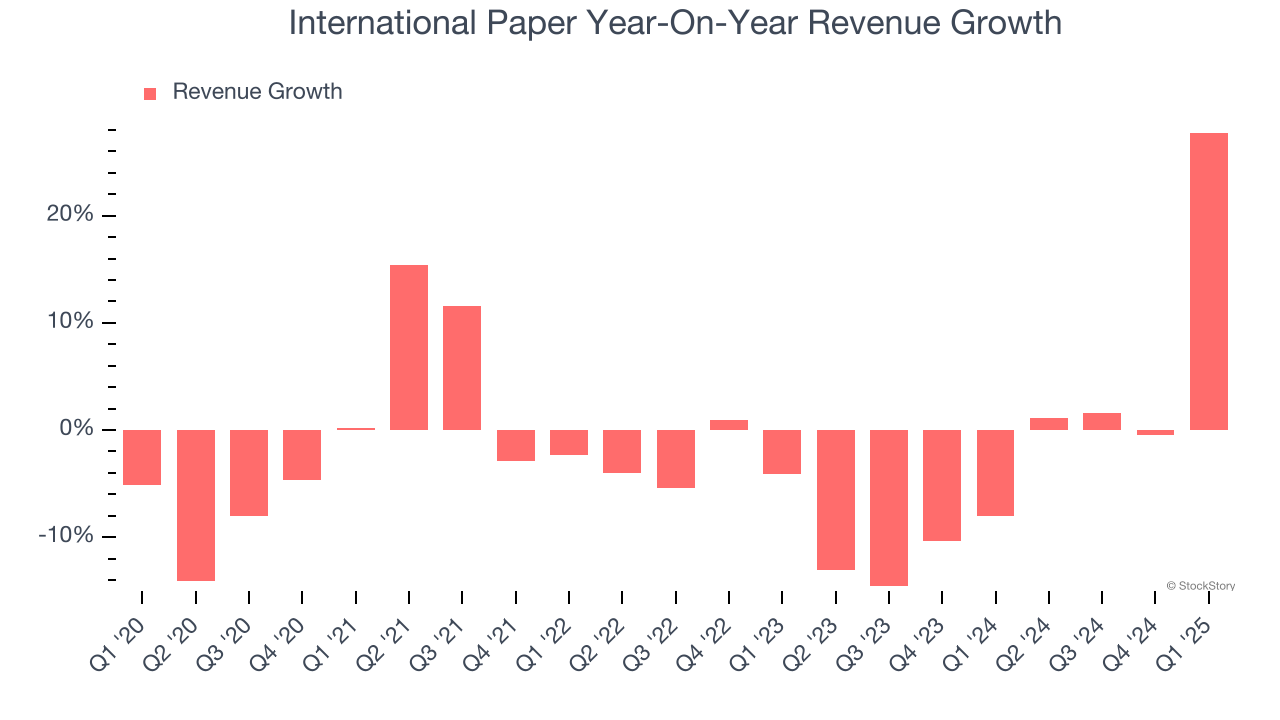
This quarter, International Paper generated an excellent 27.8% year-on-year revenue growth rate, but its $5.90 billion of revenue fell short of Wall Street’s high expectations.
Looking ahead, sell-side analysts expect revenue to grow 30.9% over the next 12 months, an improvement versus the last two years. This projection is eye-popping for a company of its scale and implies its newer products and services will catalyze better top-line performance.
Today’s young investors won’t have read the timeless lessons in Gorilla Game: Picking Winners In High Technology because it was written more than 20 years ago when Microsoft and Apple were first establishing their supremacy. But if we apply the same principles, then enterprise software stocks leveraging their own generative AI capabilities may well be the Gorillas of the future. So, in that spirit, we are excited to present our Special Free Report on a profitable, fast-growing enterprise software stock that is already riding the automation wave and looking to catch the generative AI next.
Operating Margin
Operating margin is a key measure of profitability. Think of it as net income - the bottom line - excluding the impact of taxes and interest on debt, which are less connected to business fundamentals.
International Paper was profitable over the last five years but held back by its large cost base. Its average operating margin of 6.3% was weak for an industrials business.
Analyzing the trend in its profitability, International Paper’s operating margin decreased by 5.8 percentage points over the last five years. We’ve noticed many Industrial Packaging companies also saw their margins fall (along with revenue, as mentioned above) because the cycle turned in the wrong direction, but International Paper’s performance was poor no matter how you look at it. It shows that costs were rising and it couldn’t pass them onto its customers.
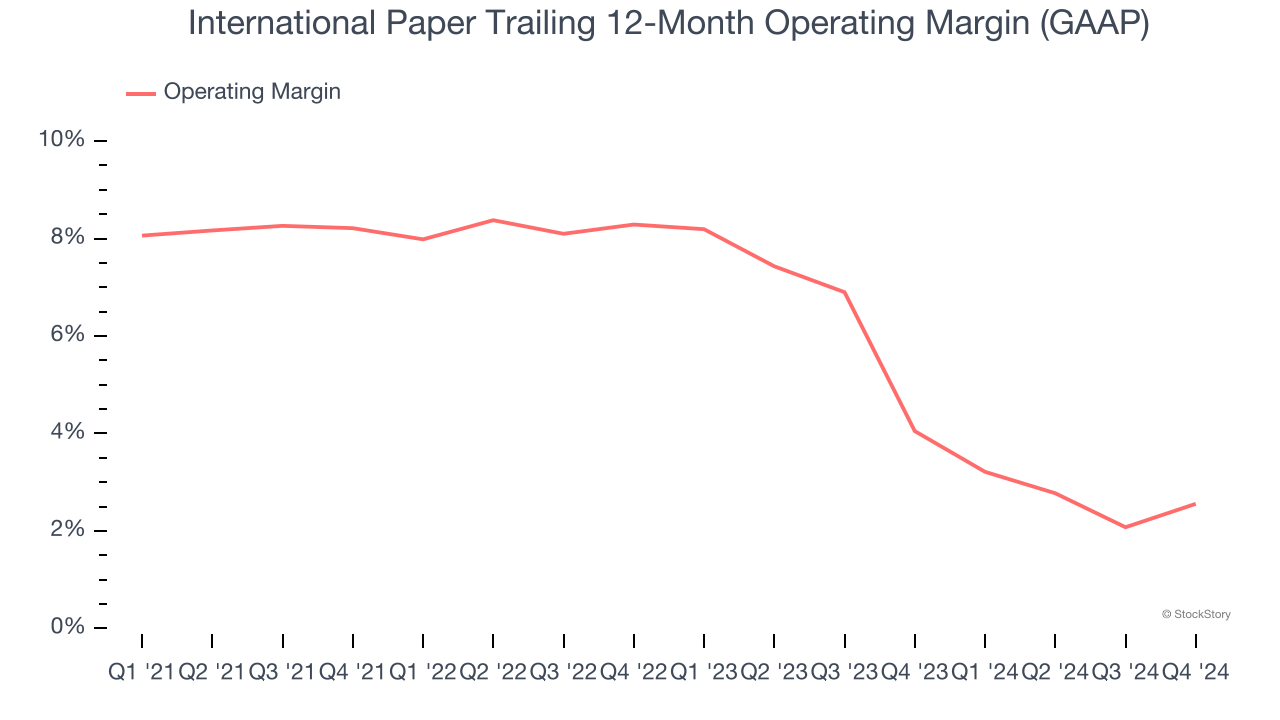
Earnings Per Share
We track the long-term change in earnings per share (EPS) for the same reason as long-term revenue growth. Compared to revenue, however, EPS highlights whether a company’s growth is profitable.
Sadly for International Paper, its EPS declined by 21.1% annually over the last five years, more than its revenue. This tells us the company struggled because its fixed cost base made it difficult to adjust to shrinking demand.
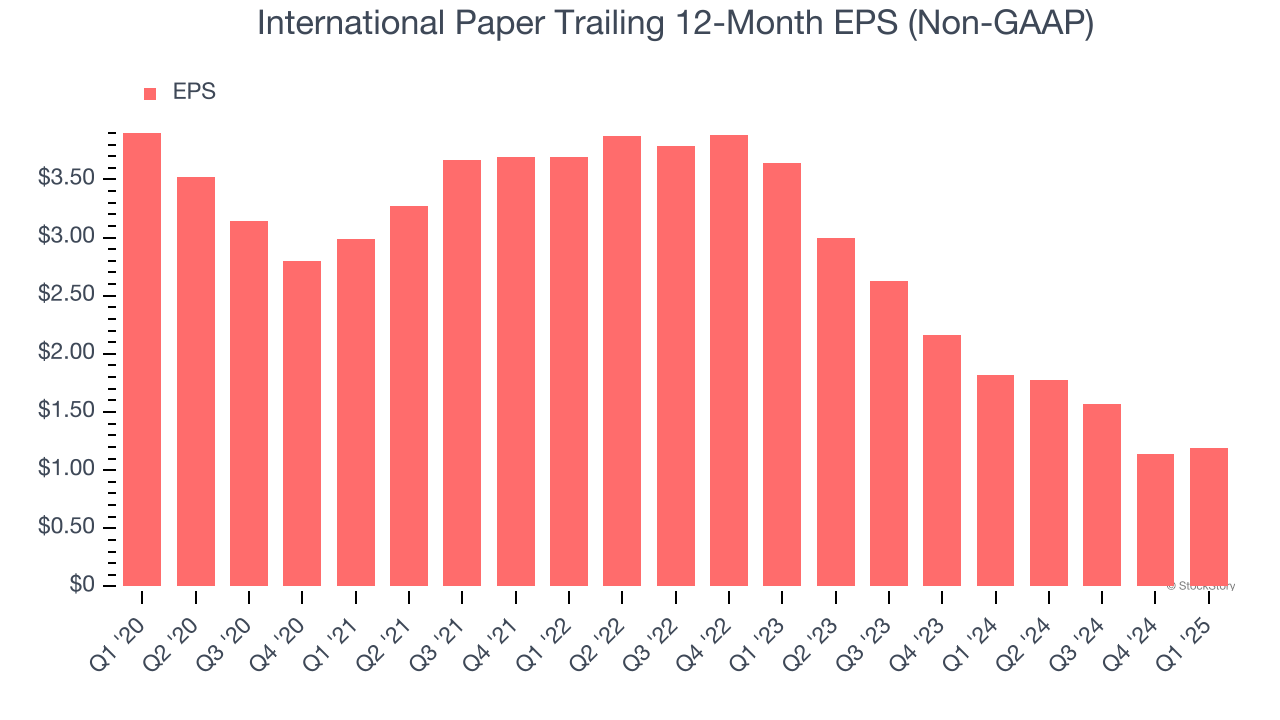
Diving into the nuances of International Paper’s earnings can give us a better understanding of its performance. As we mentioned earlier, International Paper’s operating margin declined by 5.8 percentage points over the last five years. Its share count also grew by 11.5%, meaning the company not only became less efficient with its operating expenses but also diluted its shareholders. 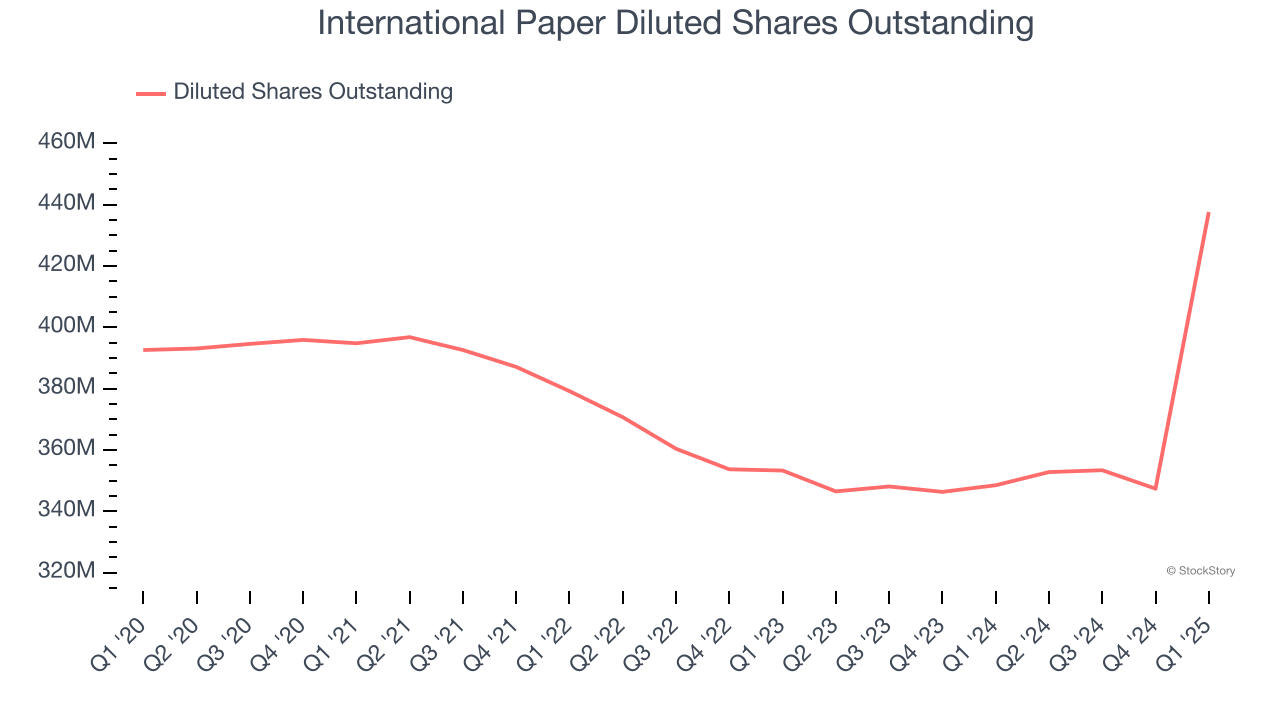
Like with revenue, we analyze EPS over a more recent period because it can provide insight into an emerging theme or development for the business.
For International Paper, its two-year annual EPS declines of 42.8% show it’s continued to underperform. These results were bad no matter how you slice the data.
In Q1, International Paper reported EPS at $0.23, up from $0.18 in the same quarter last year. Despite growing year on year, this print missed analysts’ estimates. We also like to analyze expected EPS growth based on Wall Street analysts’ consensus projections, but there is insufficient data.
Key Takeaways from International Paper’s Q1 Results
We struggled to find many positives in these results. Its EPS missed significantly and its revenue fell slightly short of Wall Street’s estimates. Overall, this was a softer quarter. The stock traded down 2.5% to $46.43 immediately following the results.
International Paper underperformed this quarter, but does that create an opportunity to invest right now? What happened in the latest quarter matters, but not as much as longer-term business quality and valuation, when deciding whether to invest in this stock. We cover that in our actionable full research report which you can read here, it’s free.
